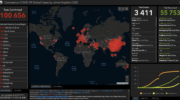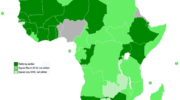
According to the annual Barometer of the World Tourism Organization (UNWTO), international tourist arrivals jumped 7% in 2017, reaching 1.322 billion. This momentum is expected to continue in 2018 at a rate of between 4% and 5%.
The 2017 growth rate was significantly higher than the annual average since 2010, which is 4%. This is the highest rate in seven years. Tourism is one of the world’s main activities, accounting for about 10% of the world’s GDP.
Leading Mediterranean destinations, Europe is posting excellent results for such a large and mature region, with 8% more international arrivals than in 2016. Africa, also up 8%, consolidated 2016 rebound. The Asia-Pacific region advanced by 6%, the Middle East by 5% and the Americas by 3%.
2017 was characterized by sustained growth in many destinations and a strong recovery in those that had suffered a decline in previous years. These results are partly attributable to the global economic boom and muscular demand for outbound tourism in many traditional and emerging markets. Of particular note is the rebound in tourism spending by Brazil and the Russian Federation after a few years of decline.
“International travel continues to grow strongly, confirming the key driving role of tourism in economic development. As the third largest export sector in the world, tourism is essential for job creation and the prosperity of communities around the world” said UNWTO Secretary-General Zurab Pololikashvili, adding:” To support this sustained growth, we must work more closely together to ensure that growth benefits all members of all host communities without losing sight of sustainable development goals.”
Growth is expected to continue in 2018
The current momentum is expected to continue in 2018 but at a more moderate pace following the eight years of steady expansion following the 2008-2009 economic and financial crisis. Given the current trends, economic prospects and forecasts of the UNWTO expert group, international tourist arrivals worldwide are estimated to increase by 4 to 5 per cent in 2018, a rate still above average of 3.8% projected by the UNWTO for the period 2010-2020 in its long-term forecast document Tourism by 2030. Europe and the Americas should advance 3.5%-4.5%, Asia-Pacific 5%-6%, Africa 5%-7% and the Middle East 4%-6%.
2017 Results by UNWTO Region

International tourist arrivals in Europe reached 671 million in 2017, a remarkable increase of 8% after a relatively dull 2016. This growth is attributable to the extraordinary results recorded by Southern and Mediterranean Europe (+ 13%). Western Europe (+ 7%), Northern Europe and Central and Eastern Europe (+ 5% in both cases) also show solid growth.
Asia-Pacific (+ 6%) welcomed 324 million international tourists in 2017. These arrivals are up 10% in South Asia, 8% in Southeast Asia and 7% in Oceania. They increased by 3% in Northeast Asia.
The Americas (+3%) accounted for 207 million international tourist arrivals in 2017, with most destinations showing positive results. South America led the way (+ 7%), followed by Central America and the Caribbean (+ 4% in both cases), the latter showing clear signs of recovery after hurricanes Irma and Maria. In North America (+ 2%), the solid results of Mexico and Canada contrast with a decline in the United States, the largest destination in the region.
Given the data available for Africa, growth in this region is estimated at 8% in 2017. The continent consolidated its rebound in 2016 and reached a record 62 million international arrivals. North Africa enjoyed a strong recovery with arrivals up 13%, while those in sub-Saharan Africa grew by 5%.
The Middle East (+ 5%) reports 58 million international tourist arrivals in 2017, with steady growth in some destinations and a strong recovery in others.
Source: World Tourism Organization (UNWTO)




